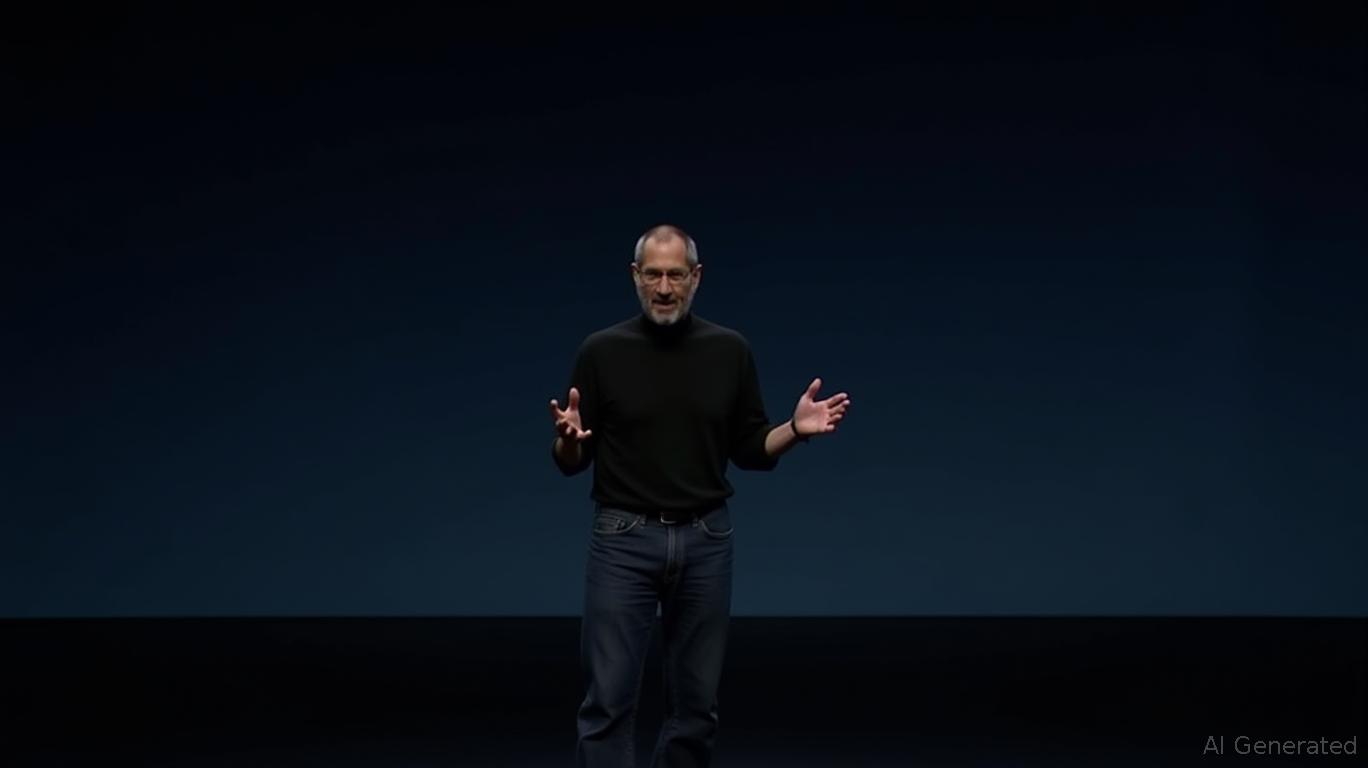Steve Jobs' Bold Presentation Changed Smartphone Displays for Good
- Steve Jobs pressured Corning to produce the first iPhone screen in 2007, accusing its leaders of fearing risk despite initial reluctance. - This collaboration led to Gorilla Glass becoming the smartphone industry standard, reshaping mobile device design and durability. - Apple's $2.5B U.S. glass production investment triples Corning's Kentucky factory capacity, aligning with its China diversification strategy. - Legal challenges persist as Apple appeals Epic Games' App Store ruling, with potential $10B a
Apple's groundbreaking partnership with
Back then, Corning was reluctant to sign on to manufacture the iPhone’s glass screen, with internal voices suggesting the deal should be declined. Jobs, however, used his reputation for relentless standards and boldness to persuade Weeks. "Do you know what your problem is? You're afraid. You know, you're afraid I'm going to launch the biggest product in history, and I'm not going to be able to do it because you failed, and I'm going to eviscerate you," Jobs reportedly told Weeks, according to AppleInsider. The conversation, described as a masterclass in persuasion, convinced Corning to take the leap, resulting in the creation of Gorilla Glass, which soon became the industry norm for smartphones.

The alliance has since progressed, with Corning now providing the advanced Ceramic Shield 2 for the iPhone 17.
At the same time, Apple continues to deal with legal disputes, including its appeal in the Epic Games App Store lawsuit. The company is trying to overturn a federal court order that prevents it from collecting commissions on purchases made outside the App Store, arguing that the decision imposes excessive financial burdens, according to
Investor outlook remains cautiously positive, with Loop Capital upgrading Apple to a "Buy" rating and increasing its price target to $315, citing strong demand for the iPhone 17 and expectations for sustained growth through 2027, according to a
Disclaimer: The content of this article solely reflects the author's opinion and does not represent the platform in any capacity. This article is not intended to serve as a reference for making investment decisions.
You may also like
Zelle Makes a Major Move Toward Stablecoins for International Growth—Will It Avoid Consortium Challenges?
- Zelle plans global expansion via stablecoins, leveraging its U.S. bank partnerships to enable faster, cheaper cross-border payments. - The initiative remains unclear on key details like unified token structure and foreign partners, despite $308B stablecoin market growth. - Regulatory clarity from the GENIUS Act and industry trends (e.g., JPMorgan's token plans) support banks' digital asset exploration. - Skeptics cite past failures like Fnality and coordination challenges among 2,500+ institutions as ris

Don’t get locked in. The $HUGS flexible staking system offers true freedom. Get on the whitelist before it closes.

Bitcoin Updates: Institutional Investors Drive Bitcoin Growth While ETFs Transform the Cryptocurrency Landscape
- Bitcoin's institutional adoption accelerates via ETF inflows and corporate strategies, with BlackRock and T. Rowe Price leading diversified crypto fund initiatives. - BlackRock's $211M Bitcoin ETF accumulation and T. Rowe's multi-asset crypto ETF filing highlight shifting ownership from retail to institutional investors. - ETF flows show $477M Bitcoin inflows vs. Ethereum outflows, while whale activity and SpaceX's $134M BTC transfer signal consolidation among long-term holders. - A $21B Bitcoin-collater

ZEC Surges 265.57% Over the Past Month as Market Experiences Robust Rally
- Zcash (ZEC) surged 265.57% in 30 days, hitting $270.88 amid crypto market rebound post-$19B liquidation. - Analysts highlight ZEC's bullish technical patterns, institutional interest, and macroeconomic tailwinds driving its 382.83% annual gain. - A proposed backtest aims to analyze ZEC's historical performance after 15%+ daily surges, though data collection challenges persist. - Market observers monitor key levels for trend continuation, with ZEC maintaining strong volume support and bullish on-chain act